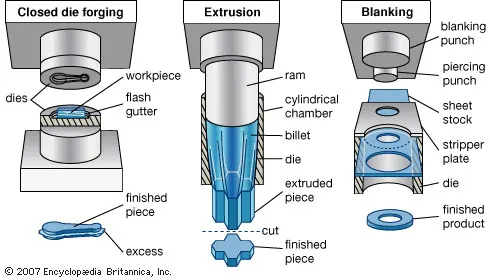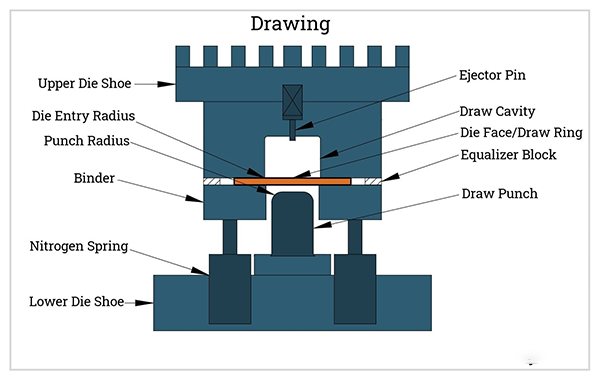In manufacturing, precision is everything. Whether it’s in the automotive, aerospace, or medical industries, the demand for exactness drives the need for high-quality, reliable parts.
But what ensures that each component meets the exact specifications required? The answer lies in the tooling and dies used in the stamping process.
These are at the core of precision stamped parts, enabling manufacturers to produce components with incredible accuracy and consistency.
This article explores the key role that tooling and dies play in creating these elements, particularly in industries where even the smallest margin of error can lead to significant consequences. Also, learn about Stars-923 by reading this article!
Understanding Tooling and Dies in Progressive Die Stamping

Progressive die stamping is a technique that involves feeding a metal strip through several stages, with each stage executing a distinct operation. These are the unsung heroes in this process, meticulously designed to shape, cut, and form metal with the utmost accuracy.
But what exactly do these do? In simple terms, the tooling refers to the equipment used to produce a part, while the die is the specialized tool that shapes or cuts the material. The intricate design of these tools ensures that each stamped part is consistent in shape, size, and quality. With adequately designed, achieving the high accuracy required in industries such as medical injection molding is possible.
Also Read This Article: –
The Impact of Tooling on Precision
Its importance cannot be overstated when it comes to precision-stamped parts. It determines not only the shape and size of the part but also its quality and performance. Imagine trying to create a medical device component where even a millimeter’s deviation could render it useless.
This is where tooling ensures that the metal is precisely shaped, cut, and formed helps maintain the strict tolerances needed for these parts.
In addition, the quality of the material directly impacts the longevity of the die and, consequently, the overall efficiency of the stamping process. Poor-quality equipment can lead to frequent breakdowns, increased downtime, and higher production costs, all of which are undesirable in a competitive manufacturing environment.
Dies: The Backbone of Precision Stamping

If tooling is the brain of the stamping process, then dies are certainly the backbone. These are responsible for cutting and shaping the material, and their design is key in determining the final quality of the stamped part. Each one is custom-made for the specific part it produces, ensuring that every aspect of the design is carefully considered.
These must be robust enough to withstand the pressure and wear that come with repeated use, while maintaining the high accuracy needed for each part.
Moreover, the complexity of modern equipment often requires dies to perform multiple operations simultaneously, further highlighting the need for careful design and maintenance. With high-quality dies, the consistency and accuracy of stamped parts would be maintained, affecting the reliability of the final product.
Do You Know?
The world’s largest die that is used for forging steel billets can weigh over 100 tons. These heavy tools are often used in industries like shipbuilding and construction to produce large structural components.
Maintenance: Ensuring Longevity and Precision
Maintenance of these is just as vital as their design and fabrication. Over time, even the best-designed tools can wear down, leading to a loss of efficiency and an increase in production errors. Routine upkeep is required to guarantee that these items maintain optimal performance.
This includes inspecting the tools for signs of wear, sharpening or replacing cutting edges, and ensuring that the tools are properly aligned and lubricated. By investing in regular maintenance, manufacturers can extend its life, reduce downtime, and maintain the high level of accuracy required for key components.
The Role of Technology in Enhancing Tooling and Die Precision
Today, technology plays a vital function in enhancing the precision and efficiency of tooling and dies. Advanced computer-aided design (CAD) software allows engineers to create highly detailed designs, ensuring that every aspect of the part is considered.
Moreover, modern manufacturing techniques, such as CNC machining and 3D printing, enable the production of these tools with unprecedented accuracy.
These technologies not only improve the craftsmanship of the stamped materials but also reduce the time and cost associated with producing and maintaining the tools. As a result, manufacturers are able to create top-quality parts more efficiently, keeping pace with the growing demands of the industry.
These are the cornerstone of precision stamped parts, which ensures the accuracy, consistency, and quality of each component. From their design and fabrication to their ongoing maintenance, every aspect contributes to the overall success of the stamping process.
In industries where efficiency is non-negotiable, the importance of high-quality tooling and dies must be considered. By understanding and investing in these tools, manufacturers can continue to produce products that meet the exacting standards required in today’s competitive market. The next time you encounter a flawlessly crafted component, remember the major significance that tooling and dies played in bringing it to life.
Also Read: How to Half Swipe on Instagram
Also Read The Below Articles
- Feedbuzzard Com Latest News
- LetsBuildUp. Org: Empowering Communities & Fueling Sustainable Growth
- Repelis24: Your Ultimate Guide to Streaming Movies & TV Series Online










